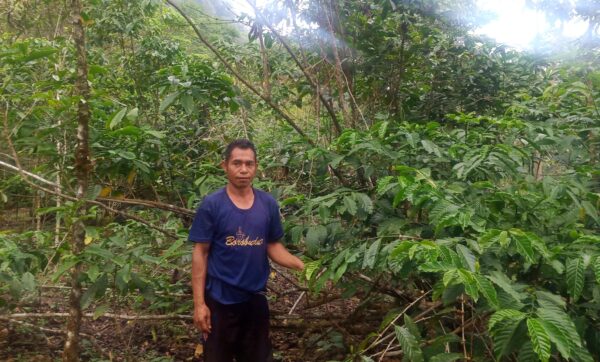The ascending pathway is flanked by coffee plants with towering branches.
In the armpits of its branches clusters of red coffee beans wait to be picked during the long dry season in eastern Indonesia.
The pathway leads to the coffee land inherited from Aloysius Mensi Arsa’s parents, members of Indigenous communities in Colol Valley, East Manggarai, East Nusa Tenggara.
Mensi [44], as he is known, dropped out of school after junior high school. Since then, he has been cultivating the farm.
Mensi admitted that he did not know the exact size of the farm covered in the Colol Agrotourism Area. “As far as I know, this farm was inherited from my parents.”
Decreased Productivity
Agrotourism areas are tourist areas that utilize the potential of agriculture or plantations as a tourist attraction.
This area is part of the Ruteng Nature Tourism Park [TWA Ruteng], a conservation area covering an area of 32,245.6 hectares that stretches across two districts, Manggarai and East Manggarai.
The Central Statistics Agency [BPS] in its report book “East Lamba Leda District in Figures, 2022” stated that Colol’s topography is in the form of valleys at an altitude range of 1,000-1,450 meters above sea level.
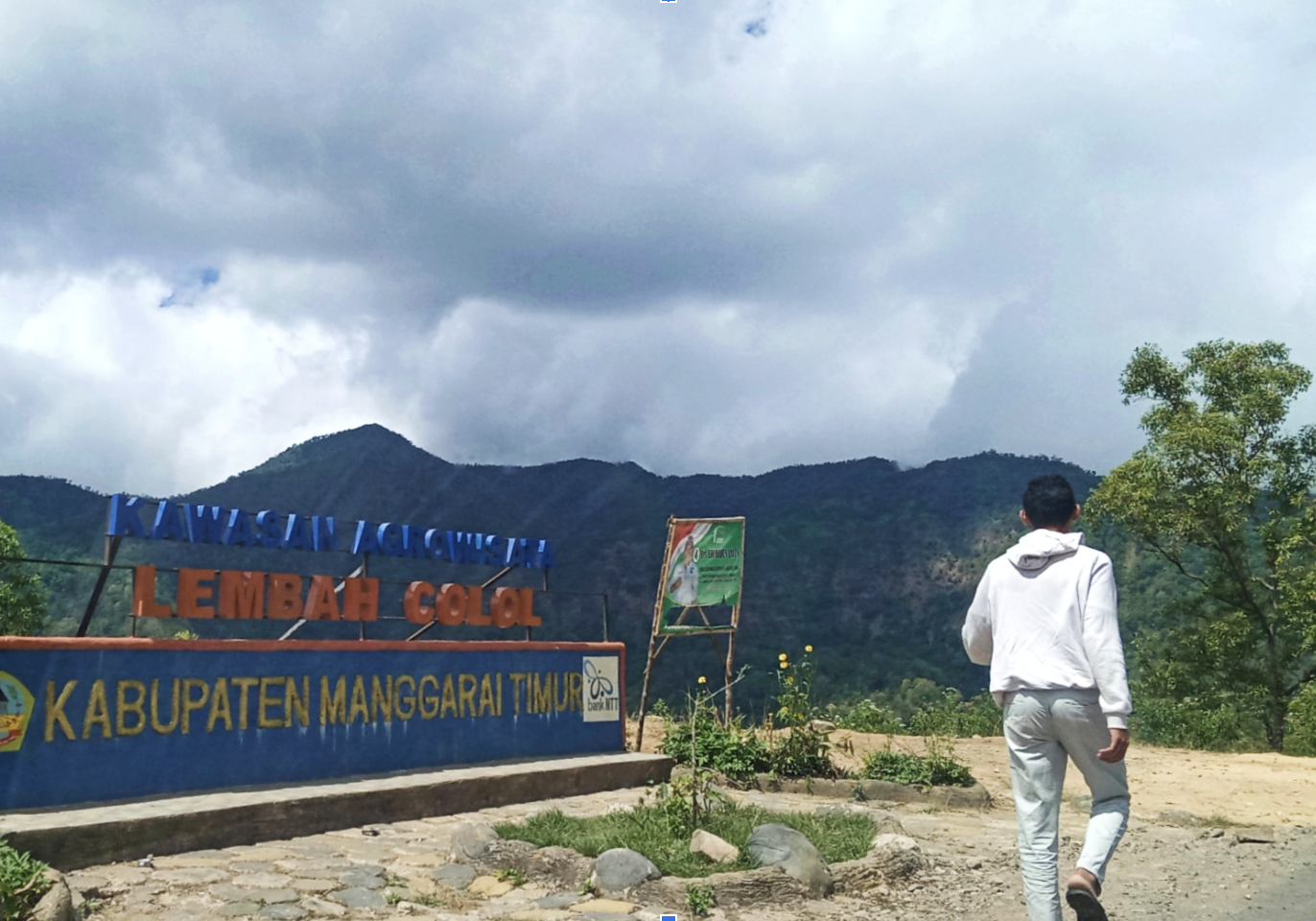
Residents – not only Mensi – have for generations called the areas under agroforestry a “coffee forest” rather than “coffee farm” in the valley of their birth.
They planted without following the ideal distance commonly practiced by planters in other coffee center areas in Indonesia.
When planting coffee seeds, Mensi’s parents did not make planting holes at a suitable distance.
“We just planted it. The important thing is to produce [beans],” said Mensi.
When mature, the coffee plants on the land form a lush canopy. At first glance, it looks like a biodiverse tropical rainforest canopy.
Mensi never counted how many coffee plants he had. What he always counts is the weight and income from his coffee harvest.
In the past seven years, he said “our harvests have drastically decreased.”
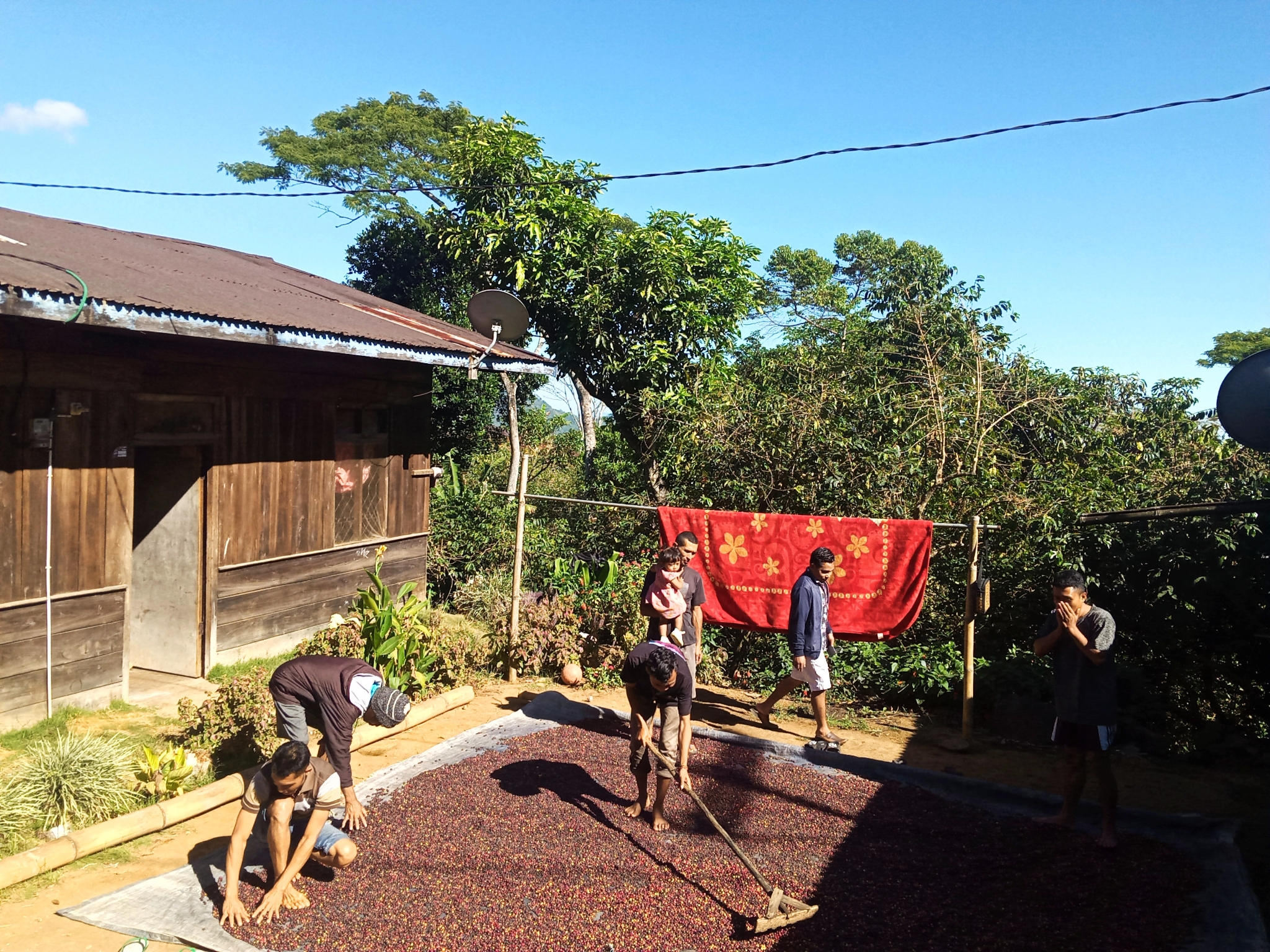
Mensi remembers the last big harvest in 2016. At that time he sold a total of 4 tons of dry unhulled green beans.
His harvest continued to decrease after that. He predicts he will only be able to sell 0.5 tons of dry, unfermented coffee beans from the beginning of January to the end of 2023.
The national productivity of smallholder coffee in 2021, or the latest data provided by BPS was 610 kilograms of green beans per hectare [kg gb/ha]. The total area of people’s plantations for the same year was 1,257,791 ha.
The numbers “tend to be consistent for at least the last five years,” said Tosca Santoso, a coffee farmer assistant in Cianjur, West Java.
National coffee productivity, he said later, “is only half of global productivity. East Nusa Tenggara’s [coffee productivity] is half that of Indonesia.”
Tosca said the decline in coffee productivity in East Nusa Tenggara was also triggered by the lack of rejuvenation.
Floresa asked for more information on land data and local coffee productivity. Sabinus Firman, Colol Village Secretary, admitted that “the village [office] does not have a profile sheet that shows [annual] data on the area of coffee land and productivity” in their work area.
“We only have brief notes in a small book,” he said. The note “does not accommodate all villages in Colol.”
Many Losses
Not only Mensi, other farmers in Colol have for years been releasing dry coffee beans to middlemen using the “ijon” system.
In the practice of “ijon”, farmers sell coffee cherries when they are still green. The immature coffee cherries are released to middlemen they already know.
For farmers in Colol, this assures a guaranteed income, and reduces some of the risk inherent in agriculture. Mensi, for example, sells coffee using a bonded bond system because he needs money to pay for his children’s school fees.

But there are downsides. They can never negotiate the selling price. “We always accept the middleman’s [purchase price set],” he said.
At the start of the July 2023 harvest, Mensi will release dry coffee for Rp22,000/kg. The sales figure is down from about a month earlier. At that time, the middleman bought the dry coffee for IDR 24,000/kg.
A year ago, the price of dry Mensi harvested coffee was sold for up to Rp35,000/kg. Even though the price is higher than this year, still, the income is not much different from last year.
“The middleman once said that our coffee is sold to Europe,” he said, where prices for 250g of coffee can be around Rp20,000.
Floresa visited a farmer’s shop in Ruteng, the capital of Manggarai Regency. The shop often receives coffee from middlemen who—according to a cashier—bring green beans from Colol.
The green beans were then bought back by people “who live in Surabaya, even in Europe.” The cashier, who refused to give his name, did not provide further details about the countries of purchase in Europe.
While directing several employees in the store, the cashier simply said, “after [the bags of coffee] leave this store, everything is taken care of by the delivery agent.”
Cuts Half of the Trunk
In Colol, coffee plants grow in villagers’ yards.
Some of the main stems of coffee plants that grow near the main footpath in the villages in Colol growsideways, branching parallel to the ground.
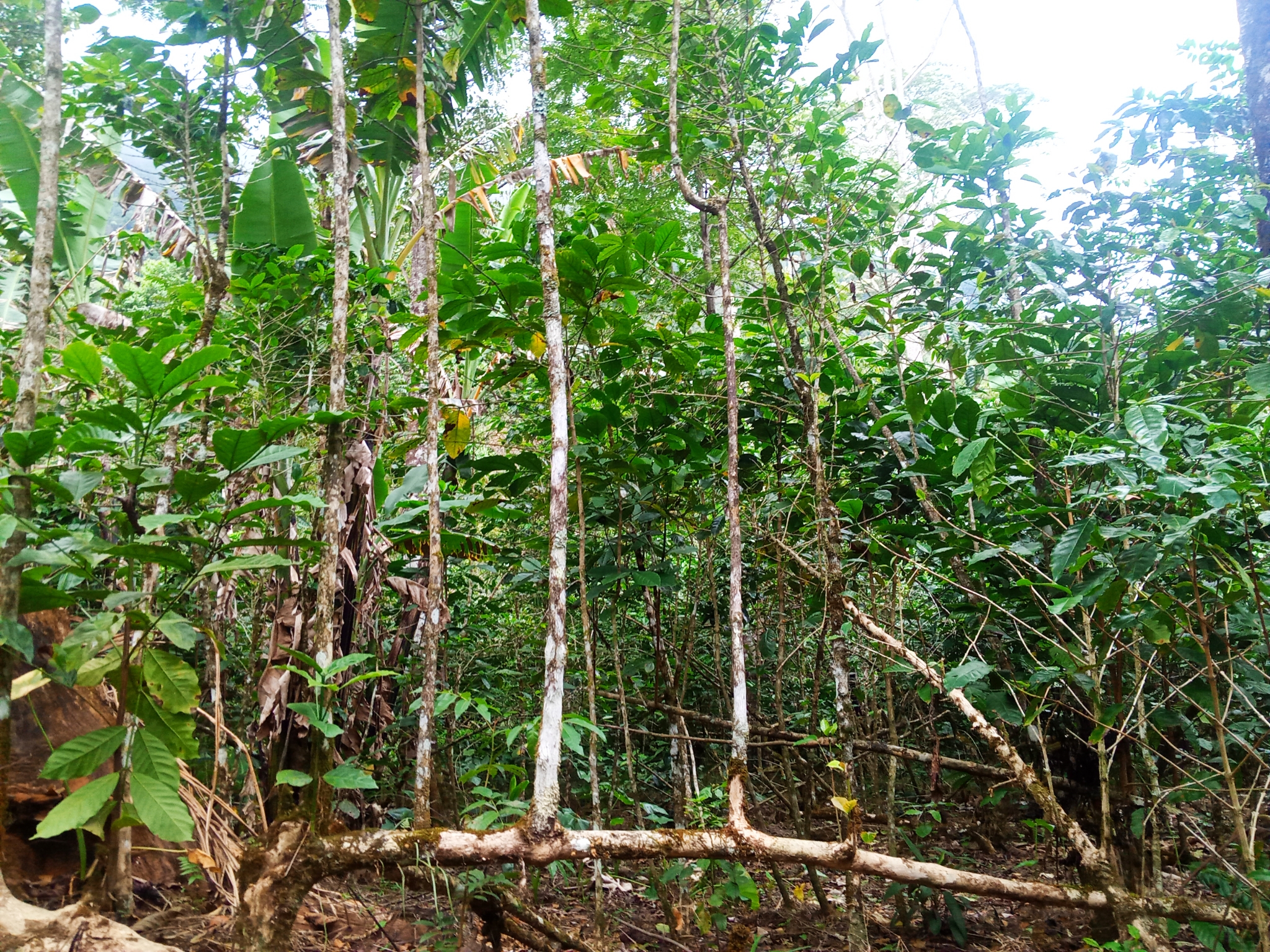
However, only robusta coffee stalks look like this. The main stem of Arabica coffee continues to grow upright.
Kasmir Odor [70], a coffee farmer in Colol, said that he cut down half of the stems of robusta type coffee “in order to produce more coffee berries from the new stems.”
The practice of cutting robusta stalks, Kasmir said, “has been going on since my parents grew coffee here.”
They do not practice the same thing with the stems of Arabica coffee plants because they are considered more fragile. Kasmir once cut half an Arabica coffee stalk before it died.
Like Mensi, Kasmir also admits that his coffee productivity has decreased since 2016. He doesn’t know the reason.
This practice of cutting robusta stalks “makes the nutrients needed by coffee plants run out over time because they have to be divided between branches,” said Tosca on September 2.
Apart from assisting farmers, he also has a coffee production house in Sarongge, a village that borders the Mount Gede-Pangrango National Park in Cianjur, West Java.
Tosca assesses that the tops of the coffee plants in Colol are too tall, making them “not ideal for producing good quality and quantity of coffee beans.”
Shoots that are too tall also affect the quality of coffee beans..
But with limited funds few Colol residents are able to hire relatives or neighbors to prune the shoots of coffee plants.
Plus, “there was almost no rejuvenation,” Tosca said. Allowing coffee plants to grow to maturity, he said, “is the same as waiting for the time when the coffee plants are finally no longer able to produce fruit.”
At the same time, in the Colol Valley, the issue of fertilization cannot immediately be a solution for productive coffee plants.
Tosca believes the easiest way to overcome nutritional deficiencies in coffee plants is by using fertilization. But “Colol farmers never fertilize coffee plants. “We completely depend on the fertility of our coffee plants from nature,” said Mensi.
From nature, they hope to continue to earn income from the coffee forest as well as their small amount of livestock.
Lack of Knowledge
In rural areas of Manggarai Raya – an area that includes West Manggarai, Manggarai and East Manggarai, residents often leave their cattle to chew the cud in the garden.
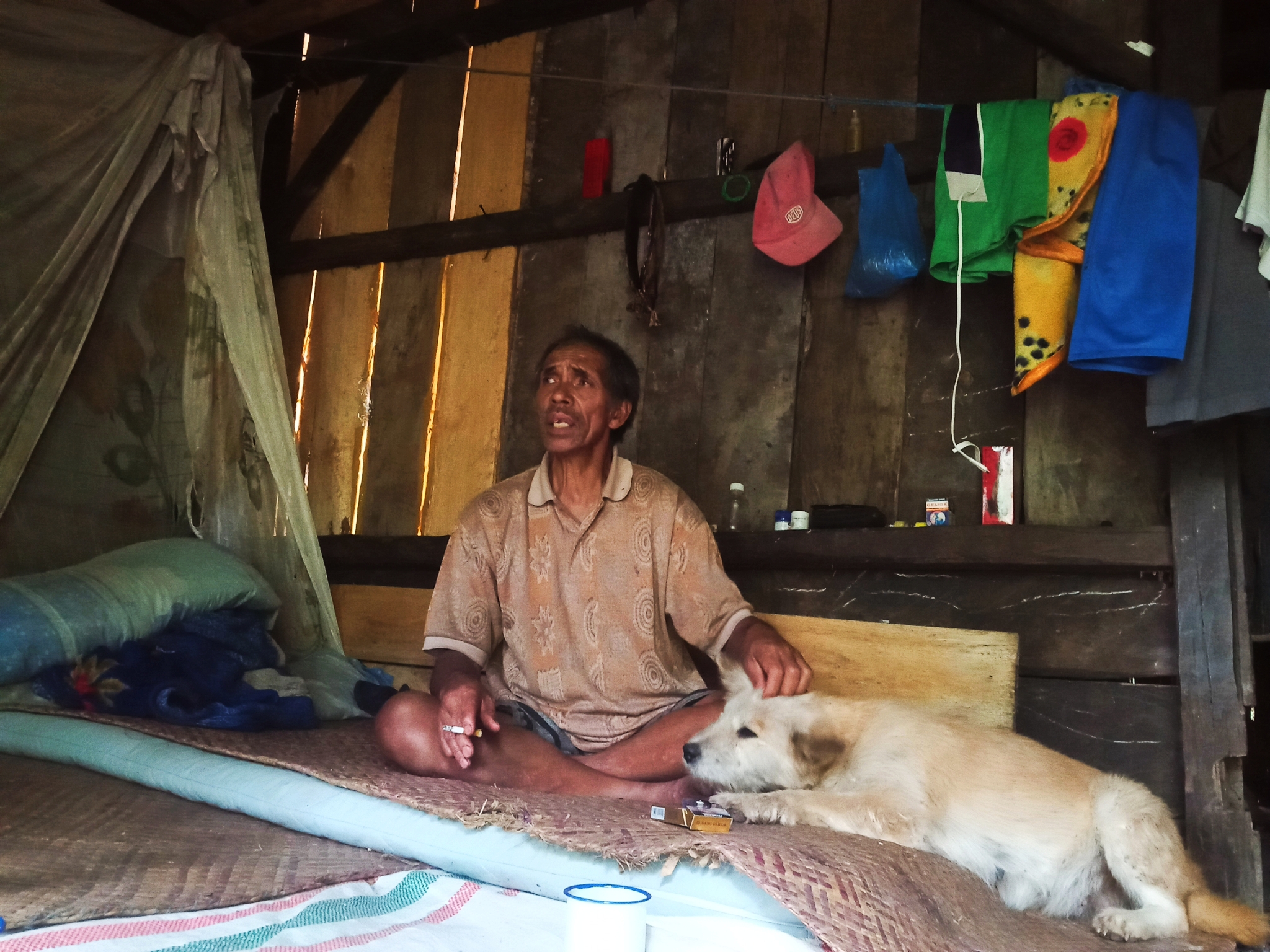
It was no different that afternoon in the Bangga Rangga Protected Forest area. At least five cows were seen grazing the cud in the coffee forest flanking the main road of the protected forest.
Bangga Rangga connects Ruteng, the capital of Manggarai Regency, and Lembah Colol in East Manggarai Regency. Bangga Rangga and Colol are about 8.3 kilometers away, or a 15 minute drive by car over a hilly ridge.
A rope is tied around the cows’ necks, connected to another thread that stretches up to 20 meters. The end is knotted on a coffee plant stem.
While the coffee farmers pull out the weeds, the cows are left to snack on the fresh grass that grows around the coffee plants.
Livestock manure, including that of cows, contains organic compounds that strengthen the nutrition of coffee plants.
“This method can actually help coffee farmers cultivate their gardens and diversify their income,” said Andy Odang.
In fact, this practice is not traditionally followed by Colol indigenous farmers.
Andy was assigned by the East Manggarai Agriculture Service as an agricultural instructor who specifically assisted coffee farmers in the Colol Valley.
There he “assisted farmers in integrating livestock and coffee on the same land.” Livestock manure, for example cows, goats and pigs, is used as fertilizer. Meanwhile “the leaves of the protective [coffee] tree prunings are used as animal feed.”
The coffee and livestock integration program began in 2016. This year the agricultural production inputs [Saprodi] provided to farmers were 129 goats, 1,000 coffee seedlings and 2,000 coffee shoot grafters using the grafting method [buds].
Procurement “comes from 20 percent of village funds for food security.”
Short Assistance
Kasmir Odor raises chickens next to his hut near the TWA Ruteng forest boundary.But he didn’t understand how to process chicken manure into fertilizer. “I hope someone from the Agriculture Service will come here and teach me how to process livestock fertilizer. But no one came,” he said.
He was confused about where to complain. At the same time, “there is no direct assistance from the Department of Agriculture.”
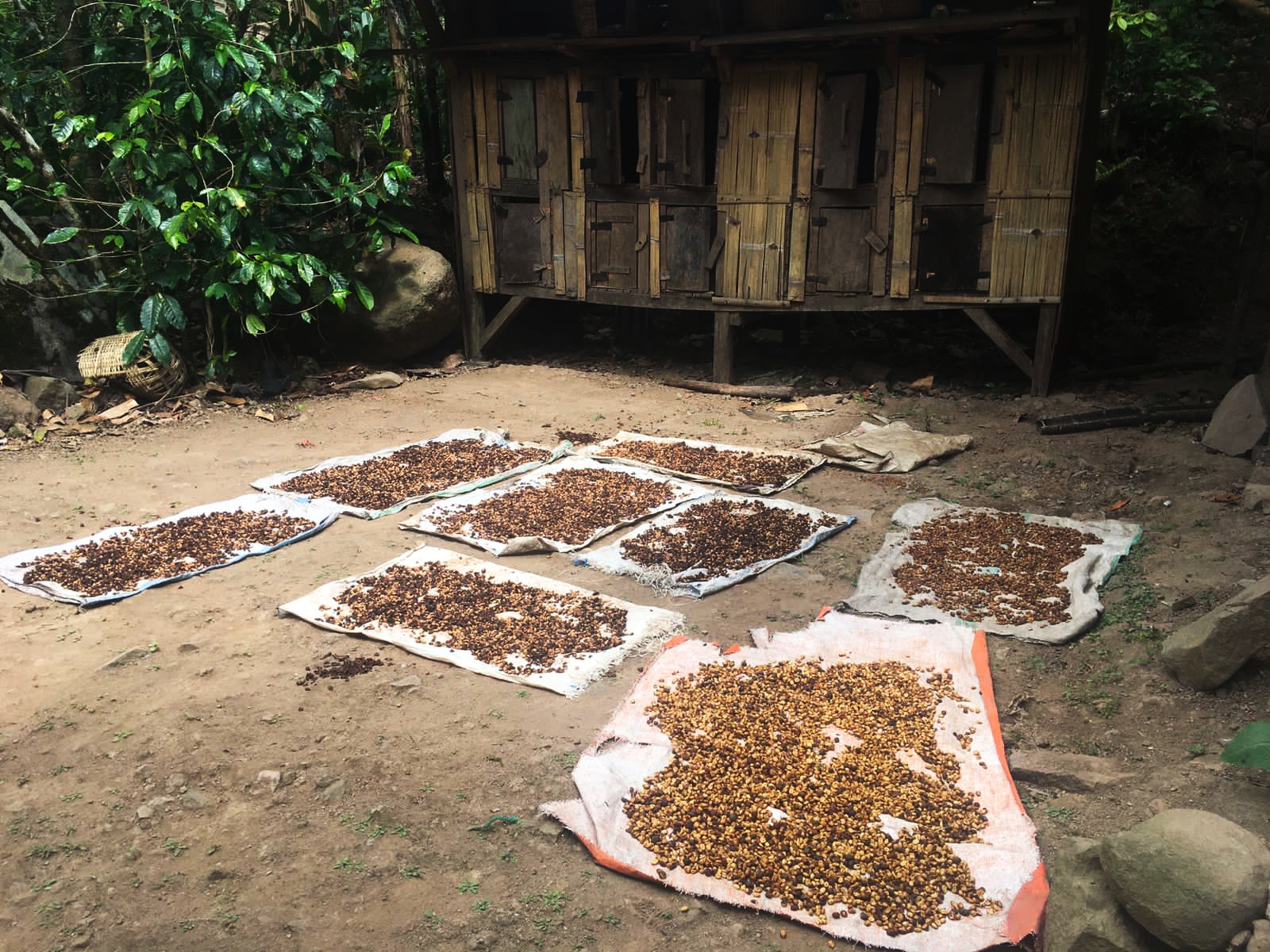
Amandus Cahaya Tukeng [34] from the coffee farmer empowerment group program “Tuk Colol Coffee Community” stated that the agricultural instructors assigned to Colol had provided assistance to local farmers.
“But the assistance in processing manure is “only two days a year.”
“I don’t know what the rest they’ve been providing [to Colol farmers].”
Even that brief assistance, he said, “was not carried out in all the villages of Lembah Colol.”
Andy stated that the “program was limited according to the budget.” The assistance itself is “carried out on an ongoing basis.”
Based in Kampung Rajong in the Colol Valley, the Tuk Colol Coffee Community works with local farmer groups to produce coffee from their forests.
The assisted groups are farmers with dependent children, pregnant and breastfeeding women, the elderly and children who have at least attended high school level.
Accompanying Floresa to meet Colol coffee farmers, Andus – Amandus’ nickname – asked several of them about whether there was assistance from the Agriculture Service.
Andus’ question was answered with a shake of the head by at least two coffee farmers who farm on the same side of the slope,
Andy said “the program does not target all Colol farmers”, which, according to data from the East Manggarai Agricultural Service, this year numbered 1,335 people.
Instead, Andy said the program “targets groups of farmers who work a total of five hectares of land.” One hectare of those is used as “an integration pilot area.”
In Cianjur, Tosca often advises coffee farmers on the slopes of Mount Gede-Pangrango to diversify their income, one of which is through raising livestock. That way, coffee farmers don’t have to spend money to buy fertilizer—even chemical fertilizer.
Finding New Ways After Cyclone Seroja
The decline in coffee productivity also caught the attention of Ayrton Wibowo, a producer of green beans sourced from coffee plantations in Beiposo, Bajawa District, Ngada Regency. Beiposo is about 121 kilometers from Colol.
Together with his Polish wife, Ayrton founded the Jara Mite coffee production house – “dark horse”, in the Ngada language – to help promote Flores farmers’ coffee to the international market.
In Poland, the couple opened the Podkawa Coffee Roastery coffee shop with Beiposo coffee as one of its superior products.
Apart from green beans, he also buys ripe, reddish coffee cherries from Beiposo farmers.
According to Ayrton, “planting methods, fertilization and the lack of coffee rejuvenation” have contributed to a decline in productivity, not only in Colol and Beiposo, but also other coffee centers on Flores Island.
The weakening of productivity “got more drastic after tropical cyclone Seroja.”
Tropical cyclone Seroja occurred in April 2021. This cyclone triggered rain accompanied by strong winds, high waves and flooding on several islands in NTT.
You could say, said Ayrton, who now lives in Warsaw, Poland, “there was almost no good quality coffee in Beiposo after tropical cyclone Seroja.”
A number of studies have found that cyclone intensity is strengthening, an indication of the climate crisis triggered by anthropogenic activities.
Researchers from the National Oceanic and Atmospheric Administration have–found that tropical cyclone intensity has increased by 8-15 percent per decade.
Tropical cyclones generally form in the equatorial zone. The waters in this zone are warmer than the surrounding waters.
Located at 8-12 degrees South Latitude, NTT is not in the equatorial edge zone [zero degrees Latitude]. That is why a number of experts, as quoted by several national media, call the Seroja cyclone an anomaly.
“In general, Indonesia is only affected by the tail of the cyclone,” said Edvin Aldrian, a climate expert from the Agency for the Assessment and Application of Technology, as quoted by Kompas.
Even so, to date there have been no studies that specifically examine the potential for the formation of other cyclones in NTT.
What is clear is that Cyclone Seroja ultimately also had an impact on Flores coffee plantations.
After tropical cyclone Seroja, “one time 50 percent of a farmer’s entire shipment of cherries appeared to float when soaked,” Ayrton said.
Floating cherries indicate low quality seeds.
Tosca also often finds cherries delivered by coffee farmers from Sarongge, Tunggilis and Pakuwon – three villages on the slopes of Mount Gede-Pangrango – that float when soaked.
When that happens, he usually immediately intervenes and visits the farmer’s garden. To the farmer, he will recommend several ways that can improve quantity and quality in the next harvest season.
However, “we cannot determine the same method for every coffee farmer,” said Tosca.
Sit Down, Negotiate Solutions
A similar view was also expressed by Patrice Christian Vallette, Chief Executive Officer [CEO] of PT Visioncy Global Nusantara, a coffee producer based in Mano Village, Mandosawu in South Lamba Leda District, East Manggarai.
The 54-year-old from France believes that “we cannot compare coffee farmers in, for example, Sumatra and Flores.”
“Flores coffee farmers still lack knowledge about coffee care, access to markets and adapting to the climate crisis.” In contrast, coffee farmers on the mainland of Sumatra are “beginning to become established in all three respects.”
He has been going back and forth between France and Indonesia for at least the last 30 years on business matters. Patrice co-founded Visioncy in 2012, before assuming the CEO position in January 2023.
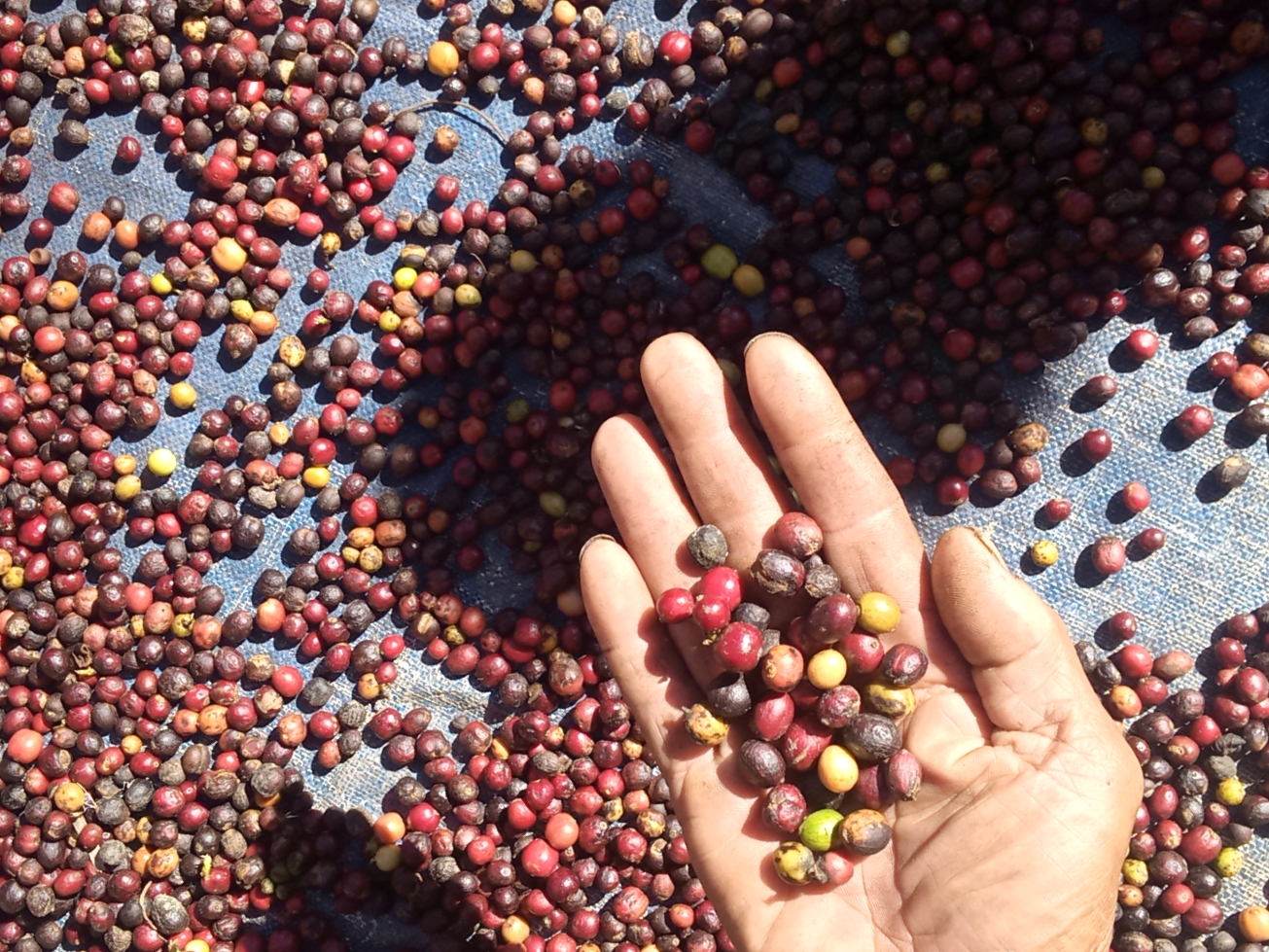
Last year the company was still buying from the Colol “coffee forest”. This year he decided to stop purchasing from there because he “didn’t want to compete with middlemen.”
Calling his company a “coffee production house”, he said Visioncy buys coffee directly from farmers, produces it but does not export it.
Apart from the rise of middlemen, another trigger that drives Visioncy to empower farmers is the realization that “we can no longer do what we did 10 years ago. The climate continues to change.”
Colol farmers, he said, “need help in the form of solutions rather than being encouraged to continue meeting coffee sales targets. “They [Colol farmers] cannot face the climate crisis alone,” he said.
Instead of attracting employees from Jakarta, he recruited a number of Mano residents to work at his company. Buying directly from coffee farmers’ crops in Mano, “we try to ensure farmers are fairly compensated.”
Tosca, who decided seven years ago to move from Jakarta to Cianjur, also has a similar perspective. “Don’t leave them alone to fumble for new ways,” he said.
The lack of assistance makes it difficult for coffee farmers who have depended on the forest for their livelihood for decades, he said.
But this difficulty is currently a part of daily life, for farmers like Aloysius Mensi Arsa.
Mensi has three children. The eldest has gone to college. His middle child is currently studying at junior high school. Meanwhile, the youngest is only two years old.
“This year’s harvest will not be enough to pay the school fees for our two children. Especially the eldest,” said Teci Suldina Ayu [38] on a cold afternoon in the Colol Valley.
Every day she helps Mensi, her husband, take care of their coffee forest. She cleares the grass that was starting to get tall around the coffee plants, while sporadically digging the ground to get forest taro.
“When we don’t have rice, we eat forest taro,” said Teci.
The coffee forest is their family’s only source of income. “We haven’t found a way to pay the school fees,” Teci continues, “I think we have to borrow from far and wide.”
This is the first of two articles related to Colol coffee farmers, with all of the coverage supported by the Earth Journalism Network

